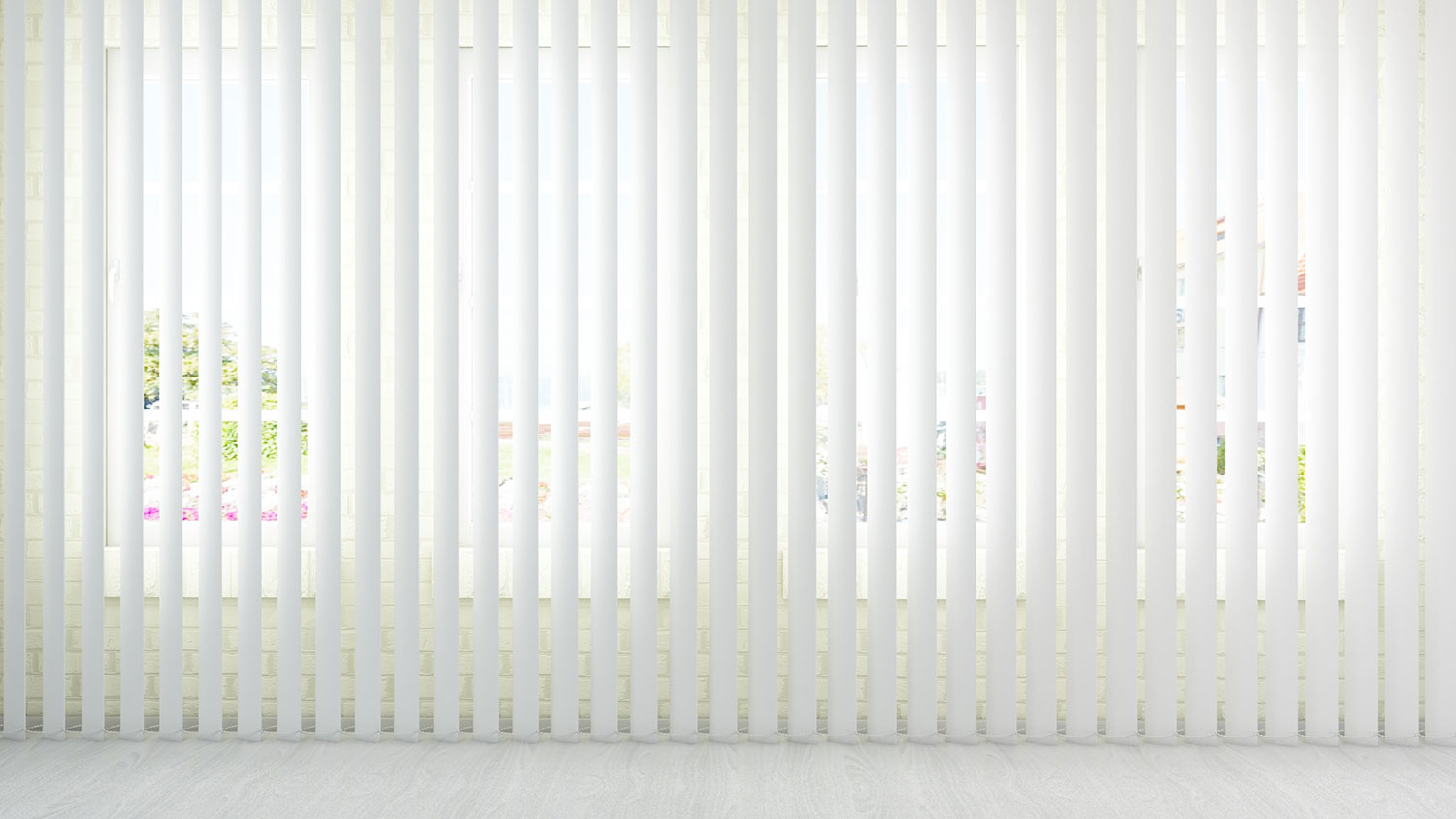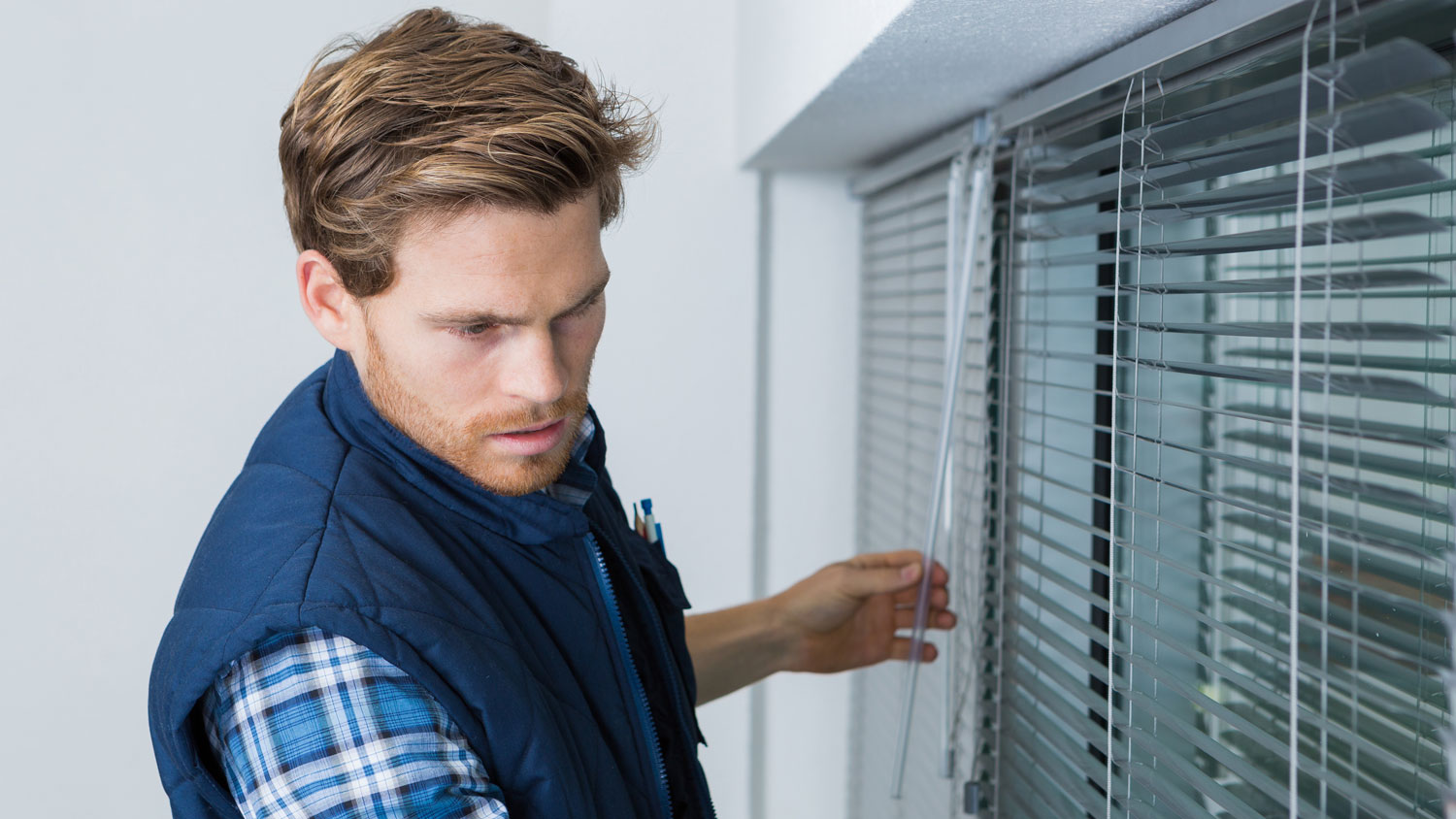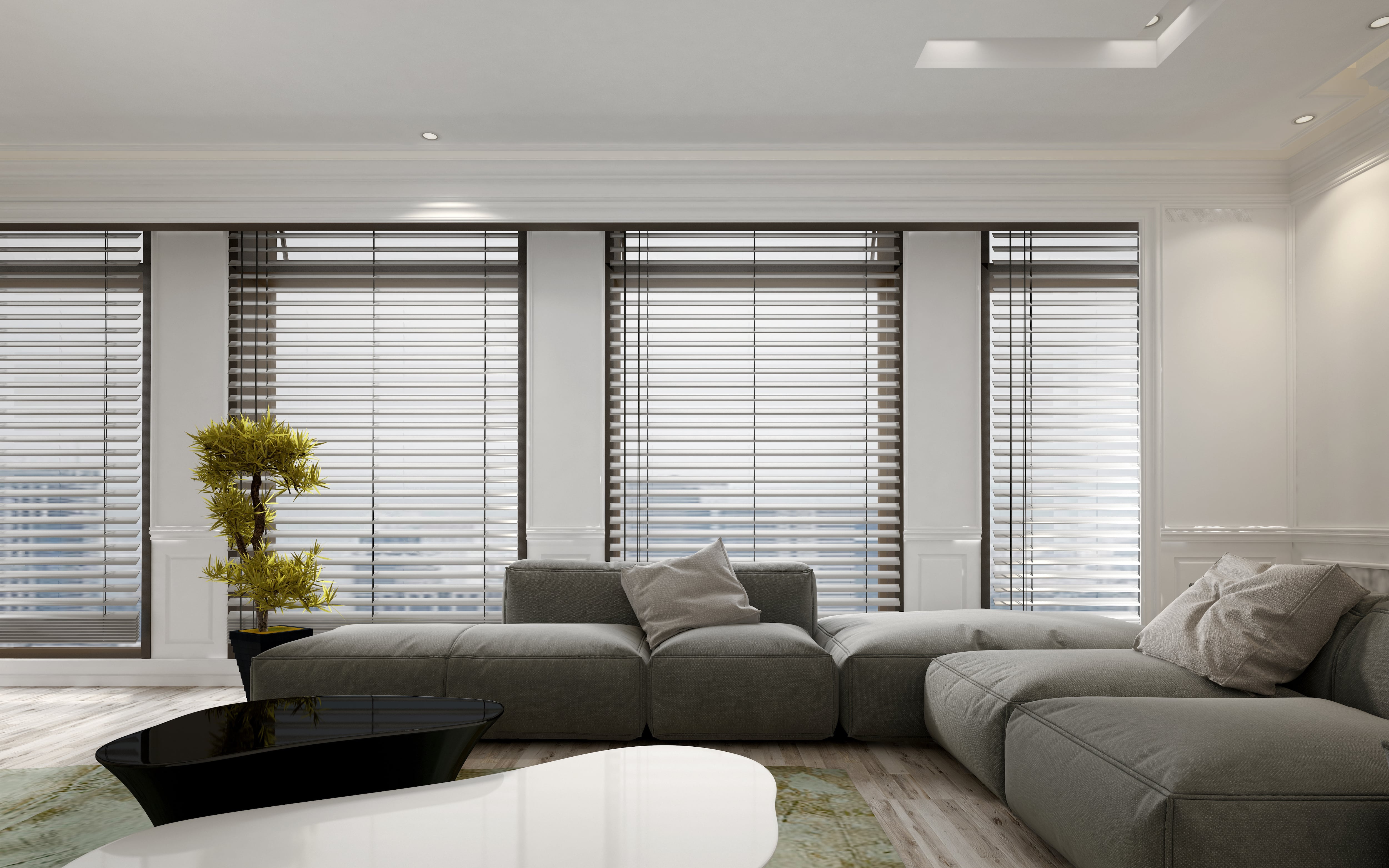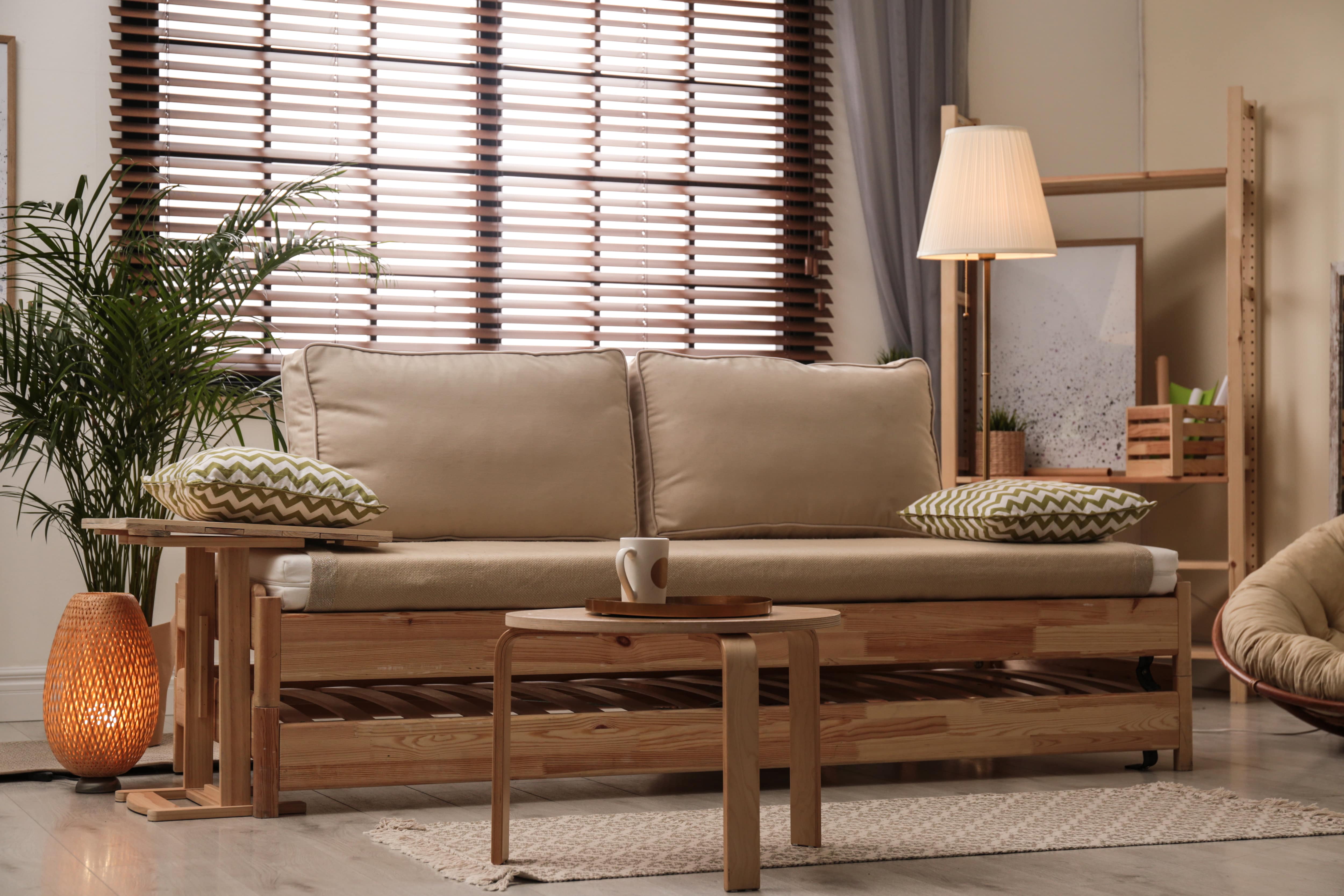
Discover the average blind cleaning cost, what impacts the price, and how to save. Get transparent estimates to keep your blinds spotless and your home fresh.
The cost to install vertical blinds averages $225, with most homeowners paying between $60 and $300. Prices depend on the window size, material, labor, and customization options.


The cost to install vertical blinds ranges from $50 to $900, with an average project cost of $225 and most homeowners paying between $60 to $300.
Standard windows cost $60 to $150, large windows $120 to $300, sliding glass doors $200 to $400, and custom or irregular-shaped windows $250 to $600 to install.
Vertical blind materials range in cost per window: vinyl $60 to $120, fabric $80 to $180, faux wood $100 to $220, aluminum $90 to $160, and PVC $80 to $150.
Professional installation labor typically costs $40 to $100 per hour, with additional features like motorization adding $100 to $400 per window.
Minor repairs cost $20 to $75, full replacement ranges from $250 to $800, and extended warranties for materials or workmanship add $20 to $50 per window.
This article was created using automation technology and thoroughly fact-checked and edited by an Angi Editor in accordance with our AI policy.
The cost to install vertical blinds ranges from $50 to $900, with an average project cost of $225. Prices vary based on the size and number of windows, material choice, and labor rates. Homeowners can expect to pay between $50 and $150 per window for installation, depending on the complexity and customization required.
New vertical blinds can boost privacy, comfort, and style while helping to manage natural light. This guide explores the key factors that impact the cost to install vertical blinds so you can plan your project with confidence.
The size and quantity of windows play a major role in the total cost to install vertical blinds. Larger windows require more materials and a longer installation time, increasing both product and labor costs. Standard-sized windows are the most affordable to outfit, while oversized, custom, or unusually shaped windows cost more due to the need for specialized blinds and installation methods.
Fitting blinds on multiple windows in one project can sometimes result in a lower per-window rate, as installers may offer bulk pricing. However, windows that are hard to reach or have unique shapes can add to your overall bill.
| Window Size/Type | Description | Average Installation Cost |
|---|---|---|
| Standard window | Up to 48 inches wide, 60 inches tall | $60–$150 |
| Large window | Up to 72 inches wide, 84 inches tall | $120–$300 |
| Sliding glass door | Wide opening, often 72–96 inches | $200–$400 |
| Custom/irregular shape | Arched, angled, or unusually sized windows | $250–$600 |
Accurate measuring is essential for budgeting and ensuring a proper fit. Professional installers include measuring as part of their service, which can help prevent costly mistakes. DIY measuring is possible but carries the risk of incorrect sizing, which may result in extra material costs or unusable blinds. For complex window shapes or large installations, relying on a pro for measurements is a wise investment.
Choosing the right type of vertical blind is central to both aesthetic appeal and overall cost. The material you select will affect durability, price, and how the blinds function in your space.
| Material Type | Average Cost per Window | Pros | Cons |
|---|---|---|---|
| Vinyl | Moisture-resistant, easy to clean, budget-friendly | $60–$120 | Limited color/texture options |
| Fabric | Soft look, many colors/patterns, quieter operation | $80–$180 | May stain, needs more cleaning |
| Faux wood | Durable, resists warping, upscale appearance | $100–$220 | Heavier, higher cost |
| Aluminum | Lightweight, modern look, moisture-resistant | $90–$160 | Can dent, limited warmth |
| PVC | Durable, easy maintenance, good for high-traffic | $80–$150 | Can discolor over time |
Standard (off-the-shelf) vertical blinds are less expensive and readily available, but custom blinds are often necessary for non-standard windows or when you want a specific color, material, or feature. Custom orders cost more and may require additional time for manufacturing and delivery.
Design choices such as color, slat width, textures, and decorative valances can further influence the final price. Wider slats and designer finishes add to the cost, while basic options help keep your project on budget.
Where you live has a direct impact on the cost to install vertical blinds. Labor rates, supplier pricing, and demand all vary by region. Urban areas and high-cost-of-living cities see higher installation costs, while rural regions may offer lower rates but have fewer installer options.
Installation costs can also fluctuate based on the room or area within your home. Living rooms and bedrooms with standard windows are often less expensive to outfit than large patio doors or high-ceilinged spaces. Expect to pay more for installations in areas that are hard to access, such as stairwells or vaulted ceilings, as these may require additional equipment and labor.
Many variables influence the final cost of installing vertical blinds, from the contractor you hire to the specific features you choose.
The type of installer you select—handyman, window treatment specialist, or general contractor—affects both labor rates and minimum fees. Specialists may charge more for expertise but deliver a higher-quality finish. Handymen offer lower hourly rates, while general contractors often include blinds as part of larger renovations.
Labor is priced per window or as a flat project fee, with hourly rates ranging from $40 to $100 depending on region and experience. Complex installations with multiple or custom windows will take longer, increasing labor costs.
Most residential vertical blind installations do not require permits. However, permits might be necessary for commercial properties or if your homeowners association (HOA) has restrictions. Permit costs, if needed, are between $25 and $100. Always check local regulations before starting your project.
Upgrades such as motorized or remote-controlled blinds come with higher upfront costs for both materials and installation. Adding motorization costs $100 to $400 per window. Child safety features, like cordless operation, may add a moderate premium. Decorative touches, such as valances or blackout liners, also increase your project’s total cost.
Project complexity, such as installing blinds on bay or angled windows, around obstructions, or into masonry frames, raises labor and material requirements. Hard-to-reach windows may require ladders, scaffolding, or an extra crew, adding to your bill. Removing and disposing of old blinds, delivery fees for new blinds, and any necessary cleaning or window frame repairs before installation can all increase costs.
Some installers include post-installation cleanup in their price, while others charge separately. If you want professional design advice, expect to pay $50 to $200 for a consultation. Large or commercial projects may require inspections, which can add $50 to $150 to your total.
When planning the cost to install vertical blinds, factor in potential future expenses for warranties, operation, maintenance, and taxes.
Both manufacturers and installers may offer warranties covering materials and workmanship. Basic warranties are often included, but you can purchase extended coverage for $20 to $50 per window. Good warranty protection can provide peace of mind and offset future repair costs.
Routine care for vertical blinds is straightforward—regular dusting and occasional cleaning suffice for most materials. Annual maintenance costs are low, but professional cleaning for fabric blinds can cost $50 to $100 per visit. Common repairs, such as replacing broken slats or tracks, range from $20 to $75, while replacing an entire mechanism may cost $80 to $200.
Homeowners' insurance may cover damage or replacement of blinds after a covered loss, such as fire or storm damage. Professional installers should be insured, which protects your home in case of accidental property damage during installation and may be reflected in slightly higher labor costs.
Hiring a local vertical blind installation pro costs more upfront, but you benefit from precise measurements, secure mounting, and smooth operation. Pros bring the right tools—such as drills, levels, and measuring devices—and the experience needed to install blinds without damaging walls, window frames, or the blinds themselves.
Installing vertical blinds involves careful measuring, proper hardware placement, and precise alignment. Here are some of the top reasons to work with a pro:
Professionals know how to take exact measurements and adjust blinds for window size, ensuring proper coverage and operation.
They install brackets and hardware securely, preventing sagging, misalignment, or blinds that fall.
Hiring a pro reduces the risk of damage to walls, trim, or the blinds during installation.
Many contractors can also handle related tasks, such as replacing old blinds, customizing valances, or coordinating multiple windows for a consistent look.
If you want to take on some tasks yourself, here are a few DIY steps that can help reduce time and labor costs:
Clear the area around windows, removing curtains, furniture, or décor that could obstruct installation.
Measure the window width and height carefully, even if a pro is doing the final installation, to speed up the process.
Organize hardware and blinds in advance to make the installation more efficient.
When your vertical blinds show signs of age or damage, you’ll need to decide whether repair or replacement is best.
Repair is suitable for minor issues, such as a few broken slats or a malfunctioning track. Replacement makes sense when blinds are outdated, extensively worn, or have non-functioning mechanisms. Blind repair costs for minor fixes range from $20 to $75, while full replacement costs $250 to $800.
The “50% rule” is a helpful guideline—if repair costs approach or exceed half the price of new blinds, replacement is the better investment. Product age and warranty status also affect your decision. Newer blinds under warranty are worth repairing, while older, out-of-warranty blinds may be better off replaced for improved function and style.
Installing new vertical blinds can offer a modest return on investment, especially if you’re updating older or damaged window treatments. The estimated ROI for new vertical blinds is 60% to 70%, as they enhance home appeal and attract buyers with their clean look and practical benefits. Energy-efficient blinds can lower utility bills by improving insulation, especially for large windows and patio doors.
Compared to other window treatments like curtains or shutters, vertical blinds are affordable and easy to customize. They also provide strong privacy, safety, and design flexibility, making them a smart choice for many homes.
Here are a few ways to keep your blind installation costs within budget:
Get multiple quotes from local installers for the best price.
Choose standard sizes and materials to avoid custom order premiums.
Install vertical blinds during off-peak seasons for potential discounts.
Remove old blinds yourself to save on removal fees.
Bundle installation with other window treatments for possible savings.
Let your pro know the size, style, and number of vertical blinds you want to install, so they can plan for the right materials, tools, and installation approach.
Describe any underlying issues you’ve noticed, like uneven window frames, existing damage, or alignment problems, that could affect the installation or require adjustments.
Ask whether you need to prep the area beforehand, such as clearing furniture, removing old window treatments, or measuring window dimensions accurately.
Confirm whether unexpected costs could arise from issues like custom sizing, hard-to-reach windows, or the need for additional mounting hardware.
If you’re considering follow-up work—like installing curtain rods, blackout liners, or motorized controls—ask whether it’s more efficient to bundle those services with the vertical blind installation.
Home is the most important place on earth, which is why Angi has helped more than 150 million homeowners transform their houses into homes they adore. To help homeowners with their next project, Angi provides readers with the most accurate cost data and upholds strict editorial standards. We extensively research project costs to develop the pricing data you see, so you can make the best decisions for you and your home. We rely on reputable sources, including the U.S. Bureau of Labor Statistics, academic journals, market studies, and interviews with industry experts—all to ensure our prices reflect real-world projects.
Want to help us improve our cost data? Send us a recent project quote to [email protected]. Quotes and personal information will not be shared publicly.
Always on time, very knowledgeable about his craft,cleans up after themselves, reasonable pricing. Would highly recommend them to paint my house again.
A very good company to work with: professional, reasonably priced, and willing to go above and beyond to satisfy the customer. We had rotted wood and new aluminum roof trim installed, and the result is perfect and done on time. I definitely recommend them and will certainly use them for...
The service was excellent! Norwin's trap caught the dangerous bob cat in short order. I am very thankful!
We had a lot of fun with our selections for our new home window blinds and shades. Alan Fann, Beltway Blinds Design Consultant, was absolutely helpful with his experiences and prompt responses. We cannot wait to see our selections installed.
Brandon Burnette did such a great job. I'm so happy I had him as my worker today. Very nice and friendly young man. 10 star in my book.
We had Brandon from DeMarks come out and power wash our siding. The house is 26 years old and had never been washed before. I can not say enough about how hard he worked to get every inch of the house sparkling clean. Not only did he wash the siding, but the soffit, fascia, and gutters as...
We had LHR install a new roof and gutter system. While they were not the cheapest, they were considered the most reliable and fetish for using only high-value products that would last for many years. Additionally, they were highly professional and never tried to push their services or any...
The crew showed up on time and finished the home theater installation as promised. The guy in charge of the team made sure it was done correctly, right down to the smallest detail. Highly recommended!
Process was organized and speedily executed. Any questions were answered timely. The installation exceed our expectations. Cleaned up daily and exceeded our expectations.
Love them and best choice to use beltway blinds Update: on 12/15/2020 the Installation team lead by Brian, he and Dennis worked so hard to install 28 plus blinds for my home. They are so courteous and very professional and hard working to install each blinds and throughout the installation...
From average costs to expert advice, get all the answers you need to get your job done.

Discover the average blind cleaning cost, what impacts the price, and how to save. Get transparent estimates to keep your blinds spotless and your home fresh.

Get expert insights on blind repair cost, including average prices, key cost factors, and ways to save. Learn what impacts your blind repair estimate.

Cellular shades are more cost-effective and energy-efficient than many other window treatments, but they’re also harder to clean. Learn how to easily clean these blinds at home.

Cleaning your blinds can seem tricky, but you can tackle the task with basic household supplies. Find out the best way to clean your blinds.

Find who to hire to repair blinds or shades—window pros, brand centers, and motorized fixes. Learn the process and get started today.

Not sure who to hire to clean blinds or shades? Learn which blind cleaning pros to call, how they work, and how to choose with confidence.